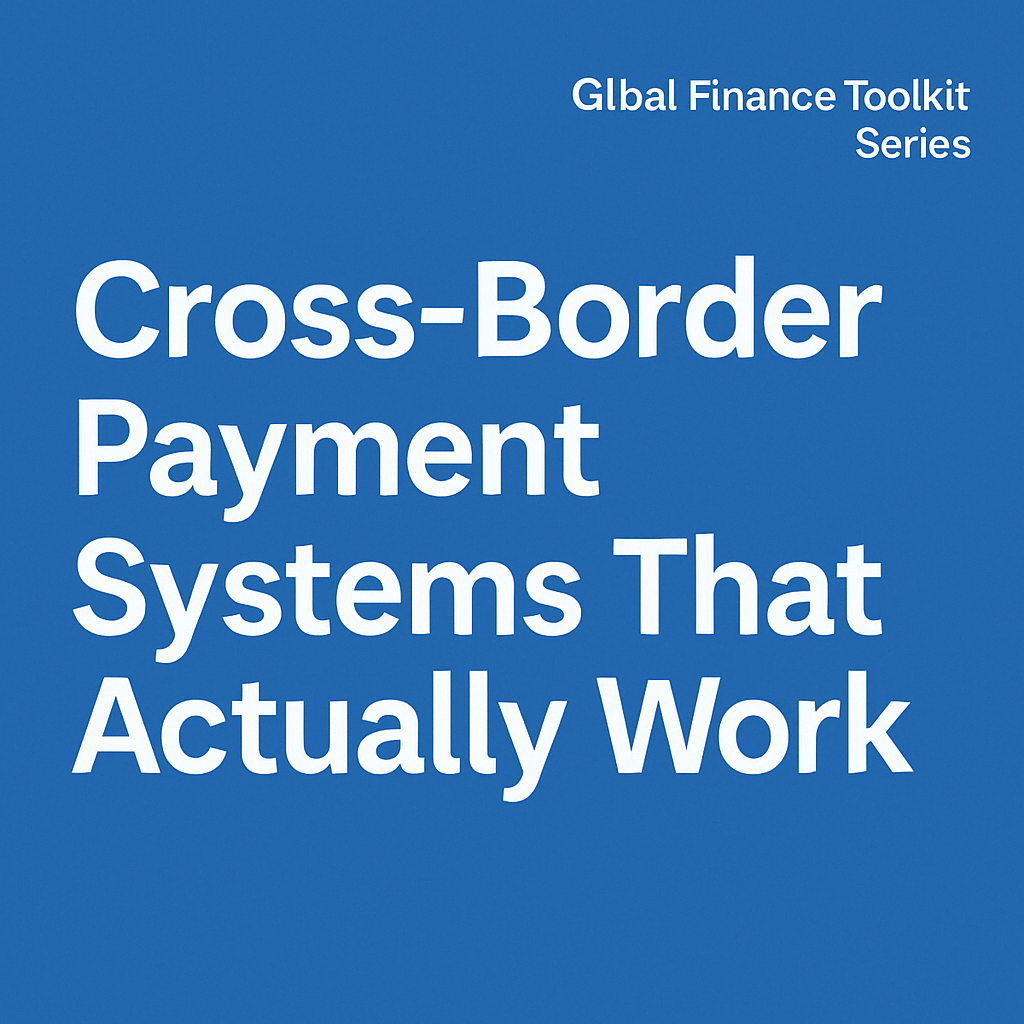Cross-Border Payment Systems That Actually Work
A 2025 guide to sending, receiving, and spending money globally — without the typical fees
Introduction
Sending money across borders used to be slow, expensive, and unreliable. Even in 2025, many people still use outdated systems that charge high fees, apply poor exchange rates, or take several business days to complete a transfer.
But if you’re an expat, freelancer, or digital nomad, you don’t have time — or money — to waste. You need a cross-border payment system that works, with speed, efficiency, and transparency.
In this guide, we’ll break down the best modern solutions and compare them to traditional systems, so you can choose the smartest way to move your money worldwide.
1. The Problems With Traditional Payment Systems
Most legacy systems rely on the SWIFT network, a system dating back to the 1970s. It connects banks globally — but has major downsides:
- Slow transfer times (2–5 days)
- Hidden intermediary fees
- Poor exchange rates
- Lack of transparency
- Limited customer support for errors
Many banks also charge outgoing and incoming wire fees — sometimes both. That means you can lose $30–$100 per transaction, depending on the countries involved.
2. What Makes a Good Cross-Border Payment System?
To qualify as “actually working,” a system should:
- Transfer money in minutes or hours, not days
- Use real exchange rates, with no hidden spreads
- Charge low, fixed, or no fees
- Be accessible from mobile and desktop
- Offer clear tracking and notifications
- Support multiple currencies and countries
- Provide customer service in English or local language
3. Top Cross-Border Payment Solutions in 2025
Wise (formerly TransferWise)
- Transfers to 70+ countries
- Mid-market exchange rates
- Transparent flat fees (shown before you send)
- Option to hold and convert currencies
- Trusted by freelancers and international businesses
Best For: Budget-conscious global transfers
Payoneer
- Popular with freelancers and marketplace sellers (Upwork, Amazon, etc.)
- Receive local bank details in multiple currencies
- Withdraw to local bank accounts worldwide
- Supports mass payouts for business clients
Best For: Receiving international payments from clients or platforms
Revolut
- Peer-to-peer transfers with zero fees (within Revolut)
- Real-time FX exchange
- Works well for sending money to friends or family
- Supports multiple currencies
- Premium accounts have higher transfer limits
Best For: Personal transfers between countries
OFX
- Large international transfers ($1,000+)
- No transfer fees
- Competitive FX rates
- Phone support and dedicated account managers
Best For: High-volume transfers with support
Cryptocurrency (USDT, Bitcoin, Ethereum)
- Borderless, fast, and irreversible
- Very low transaction fees (on certain networks)
- No intermediaries
- Can be risky due to volatility or compliance issues
Best For: Tech-savvy users who understand crypto risks
4. Use Cases: What System Works Best?
| Scenario | Recommended Solution |
|---|---|
| Sending money to family abroad | Wise / Revolut |
| Getting paid as a freelancer | Payoneer / Wise |
| Large business transactions | OFX / Crypto (USDT) |
| Budget travel transfers | Revolut / Wise |
| Amazon/eCommerce payouts | Payoneer |
| Emergency transfers (instant) | Revolut / Crypto |
5. Tips for Reducing Cross-Border Fees
- Always check the total cost (fee + exchange rate margin)
- Avoid SWIFT wires unless there’s no other option
- Use apps with mid-market rates and low fixed fees
- Use multi-currency accounts to reduce conversions
- Batch payments when possible to reduce volume-based fees
Final Thoughts
Cross-border payments shouldn’t feel like gambling — but for many, they still do.
The difference between an old-school bank transfer and a smart fintech app can mean saving hundreds of dollars per year.
Rule #4: You don’t have to pay to move your own money.
In 2025, your money should travel as freely as you do.
